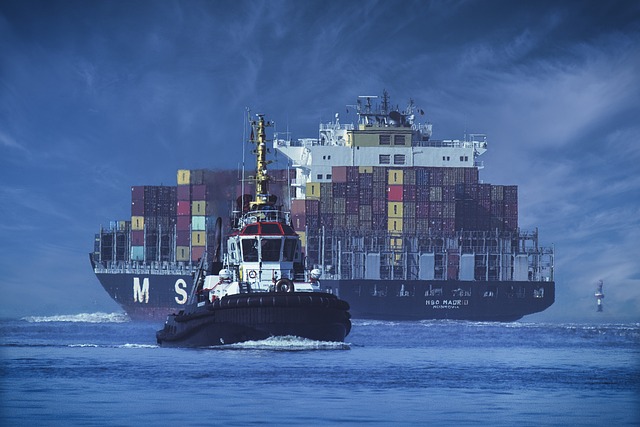In today’s interconnected world, where goods are constantly on the move, it is easy to overlook the invisible dangers lurking within the intricate web of supply chains. Beneath the surface of seamless logistics, perilous cargo silently journeys across oceans, roads, and skies, with the potential to transform convenience into catastrophe. In this article, we embark on a courageous expedition into the heart of the logistics landscape, shedding light on the unseen hazards that accompany the relentless pursuit of global trade. Brace yourself for a closer look at the treacherous domain where supply meets demand, as we uncover the hidden risks and unravel the mysteries that surround hazardous cargo.
The Vulnerability of Hazardous Cargo: Understanding the Risks Involved
When it comes to transporting hazardous cargo, it is crucial to grasp the immense risks associated with it. The transportation industry plays a vital role in ensuring the smooth flow of goods, but it is paramount to recognize the vulnerable nature of hazardous materials, both to human safety and the environment. Understanding these risks is the first step towards implementing effective safety measures and preventing potential disasters.
Hazardous cargo encompasses a wide range of materials, from flammable gases and corrosive substances to radioactive materials and explosives. Such cargo poses unique challenges due to their inherent unpredictability and the potential for catastrophic accidents. Here are some key points to consider:
- Impact on human lives: The mishandling or accidental release of hazardous materials during transportation can have severe consequences on human health and safety. Exposure to toxic chemicals or harmful radiation can lead to acute or long-term health issues, ranging from respiratory problems to cancer. Thus, it is essential to prioritize safety measures that prevent accidents and protect the well-being of those involved.
- Environmental repercussions: The improper handling of hazardous cargo can have devastating effects on ecosystems and natural resources. Spills or leaks can contaminate soil, water bodies, and the atmosphere, causing long-lasting damage to the environment and endangering plant and animal life. It is crucial to prioritize eco-friendly practices and take proactive steps to minimize the ecological impact of transporting hazardous materials.
- Regulations and precautions: Due to the inherent risks, governing bodies have established stringent regulations and guidelines for the safe transportation of hazardous cargo. It is imperative for all involved parties, including transporters, manufacturers, and regulatory agencies, to stay informed about these regulations and adhere to them strictly. Implementing robust safety protocols and ensuring proper training for personnel are essential for mitigating risks effectively.
By understanding the vulnerability of hazardous cargo and the risks involved, stakeholders can actively work towards safer transportation practices. This involves adopting advanced technologies for container monitoring, investing in specialized training, and fostering a culture of safety within the industry. It is only through comprehensive knowledge, preparation, and collaboration that we can minimize the potential dangers associated with transporting hazardous materials and protect both human lives and the environment.

Navigating the Complexities of Transporting Dangerous Goods: Key Challenges and Solutions
When it comes to transporting dangerous goods, a myriad of challenges arises that require careful consideration and expert solutions. Let’s explore some of the key obstacles faced in this complex process and delve into innovative strategies to overcome them:
- Regulatory Compliance: The foremost challenge is ensuring strict adherence to the ever-evolving regulations governing the transportation of hazardous materials. Navigating through a labyrinth of international, national, and sector-specific regulations demands meticulous planning and expertise. Collaborating with regulatory bodies, investing in advanced risk management systems, and conducting comprehensive employee training are essential steps to mitigate non-compliance risks and ensure safe transportation.
- Security and Risk Management: With the increase in global security concerns, protecting dangerous goods during transport is of utmost importance. Robust risk management strategies must be implemented to safeguard against potential theft, tampering, or unauthorized access. Utilizing sophisticated tracking technologies, establishing secure supply chain networks, and implementing proactive measures like tamper-evident seals and video surveillance are vital to ensuring the integrity and safety of these goods.
Addressing the challenges associated with transporting hazardous materials requires a multi-faceted approach where regulatory compliance and risk management take center stage. Staying abreast of ever-changing regulations and investing in cutting-edge technologies are key to surmounting these complexities and ensuring the safe and efficient transportation of dangerous goods.

Ensuring Safety and Compliance: Best Practices for Handling Hazardous Cargo
Hazardous cargo poses unique challenges when it comes to ensuring safety and compliance. To effectively handle such materials, it is crucial to adhere to best practices that prioritize the protection of people and the environment. Here are some key guidelines to consider:
- Proper categorization: Classify hazardous cargo accurately based on its nature and characteristics. This ensures that the appropriate safety measures are implemented throughout the transportation process.
- Appropriate packaging: Use approved containers, packaging, and labeling to securely enclose hazardous cargo. This includes selecting materials that are resistant to leakage, corrosion, or any potential reactions.
- Transportation guidelines: Familiarize yourself with the specific regulations and requirements governing the transportation of hazardous materials. Ensure compliance with legal frameworks, including obtaining necessary permits or licenses.
- Training and awareness: Provide comprehensive training to all personnel involved in handling hazardous cargo. This includes educating them on the risks associated with the materials, emergency response procedures, and the proper use of personal protective equipment (PPE).
- Emergency preparedness: Develop a robust emergency response plan tailored to the hazardous cargo being transported. Regularly conduct drills and maintain appropriate emergency equipment to ensure efficient and effective responses to any potential incidents.
By following these best practices for handling hazardous cargo, you can help mitigate the risks associated with transporting dangerous materials and contribute to a safer and compliant environment. Always prioritize safety and maintain a commitment to upholding the highest standards at every step of the process.

Mitigating Environmental Impacts: Sustainable Approaches Towards Dangerous Materials Transportation
When it comes to transporting dangerous materials, it is crucial to adopt sustainable approaches that mitigate the environmental impacts associated with such activities. By doing so, we can ensure that our ecosystems and communities are safeguarded from potential harm. There are several innovative and eco-friendly practices that can be implemented in order to achieve this goal.
One effective approach is to enhance container design and material selection. Utilizing durable and lightweight materials can reduce fuel consumption during transportation, thereby minimizing carbon emissions. Additionally, incorporating advanced labeling systems that clearly indicate the nature of the hazardous materials can enhance safety measures and prevent accidents. Another sustainable practice is the utilization of renewable energy sources, such as solar or wind power, to operate transport vehicles. This not only reduces carbon footprints but also decreases reliance on fossil fuels.
- Implementing efficient packaging: Employing specially designed containers that minimize the risk of leakage and spillage, ensuring safe transportation.
- Promoting transparency: Encouraging open communication and collaboration between stakeholders to address potential environmental issues and devise effective solutions.
- Investing in training and education: Providing comprehensive training programs for personnel involved in dangerous materials transportation to enhance their knowledge and expertise in handling and mitigating risks.
By implementing these sustainable approaches and continuously exploring new environmentally-friendly solutions, we can help ensure that the transportation of dangerous materials is conducted with the utmost care, preserving our planet’s delicate ecosystems and protecting every living being that inhabits it.
In Conclusion
As we conclude our exploration into the treacherous world of hazardous cargo logistics, we find ourselves standing at the crossroads of caution and discovery. Through the intricate dance of supply chains and regulations, we have delved into a realm where danger lurks in the shadows, waiting to test the resilience of those involved.
Our journey has traversed the vast landscapes of international trade, where the perils of transporting hazardous materials reveal themselves like hidden demons. From the clandestine tunnels of drug smuggling to the volatile confines of explosive substances, we have unearthed the complex web that binds the logistics industry in a delicate balance between commerce and safety.
With each revelation, a sobering reality settles upon us: the enormity of the task at hand. The men and women who navigate these hazardous waters are not mere captains of cargo vessels, but indispensable guardians of society. Their expertise and vigilance are the threads that stitch together a fragile fabric, shielding us from catastrophic consequences.
Yet, as we shine a light on the perils of the logistics landscape, we cannot overlook the quiet triumphs and tireless innovations that have emerged from this realm of danger. The industry, not content with trudging in the footsteps of shadows, continues to adapt and evolve. Behind locked doors, harboring secrets of their own, lies a symphony of breakthroughs, striving to thwart the threat of chaos while enhancing efficiency.
We must embrace this paradoxical tapestry; for within it, there exists endless potential and innovation. Whether through advancements in tracking technologies that ensure transparency or safety protocols that leave no room for error, the dance between danger and discovery fuels an industry that refuses to be daunted by the perils it faces.
So, dear readers, our journey through the logistics landscape draws to a close. Let us remember that this intricate tapestry is but a reflection of the complex world we inhabit. It is a reminder that each thread of our existence is tightly woven, influenced by the fate of hazardous cargo as it journeys across the globe. May we now step back into our own lives, forever aware of the delicate equilibrium that binds us all.
